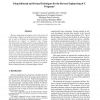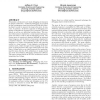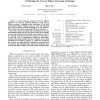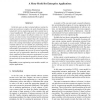4790 search results - page 15 / 958 » Reverse Query Processing |
ICSM
1996
IEEE
13 years 11 months ago
1996
IEEE
Reverse engineering of program code is the process of constructing a higher level abstraction of an implementation in order to facilitate the understanding of a system that may be...
ECLIPSE
2007
ACM
13 years 11 months ago
2007
ACM
We present a declarative and visual debugging environment for Eclipse called JIVE.1 Traditional debugging is procedural in that a programmer must proceed step-by-step and objectby...
CORR
2008
Springer
13 years 7 months ago
2008
Springer
A purely relational account of the true XQuery semantics can turn any relational database system into an XQuery processor. Compiling nested expressions of the fully compositional X...
SYNASC
2006
IEEE
14 years 1 months ago
2006
IEEE
In the last years, as object-oriented software systems became more and more complex, the need of performing automatically reverse engineering upon these systems has increased sign...
SIGMOD
2006
ACM
14 years 7 months ago
2006
ACM
The reverse k-nearest neighbor (RkNN) problem, i.e. finding all objects in a data set the k-nearest neighbors of which include a specified query object, is a generalization of the...




